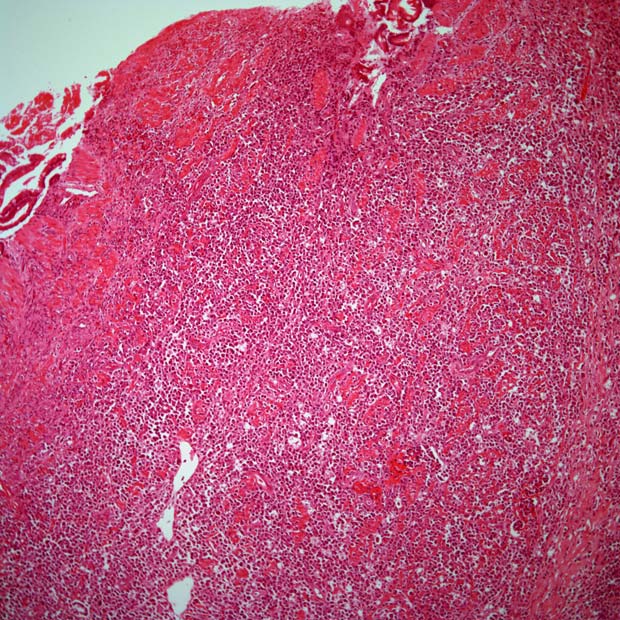SBRT/ICI May Not Enhance Survival Outcomes in Advanced Solid Tumors
The addition of stereotactic radiotherapy to immune checkpoint inhibition appears safe but yields no significant survival benefit among patients with advanced solid tumors.
"In this phase 2 randomized clinical trial, while the addition of subablative multisite stereotactic radiotherapy to ICI monotherapy failed to result in any clinically meaningful abscopal effect in a diverse and largely polymetastatic patient population, the findings suggest it is safe to combine both treatment modalities in this context and offer important insights for future trial design," according to the authors of the phase 2 CHEERS trial (NCT03511391).

There was no improvement in overall survival (OS) or progression-free survival (PFS) following the addition of subablative stereotactic radiotherapy to single-agent immune checkpoint inhibitor (ICI) for a limited number of metastatic lesions among patients with advanced solid tumors, according to data from the phase 2 CHEERS trial (NCT03511391) published in JAMA Oncology.
The median PFS was 2.8 months (95% CI, 2.5-8.4) with ICIs alone vs 4.4 months (95% CI, 2.8-7.8) with the addition of radiotherapy (HR, 0.95; 95% CI, 0.58-1.53; P = .82). The median OS was 11.0 (95% CI, 9.0-not reached [NR]) and 14.3 (95% CI, 11.0-NR) months, respectively (HR, 0.82; 95% CI, 0.48-1.41; P = .47). Investigators also reported objective response rates of 22% and 27% in each respective arm (P = .56).
The local control rate of irradiated lesions was 75% among patients who received radiotherapy, 15 of whom (33%) had a complete response of irradiated lesions. An immune RECIST-defined complete response was the best overall response in 8% and 16% of patients in the control and experimental arms, respectively.
“To our knowledge, this is the largest study to date to evaluate the combination of radiotherapy and checkpoint blockade in a randomized fashion,” the investigators wrote.
“In this phase 2 randomized clinical trial, while the addition of subablative multisite stereotactic radiotherapy to ICI monotherapy failed to result in any clinically meaningful abscopal effect in a diverse and largely polymetastatic patient population, the findings suggest it is safe to combine both treatment modalities in this context and offer important insights for future trial design. Recent evidence suggests that treating all active disease sites with higher radiation doses in a selected patient population may be a more promising strategy to optimize systemic disease control.”
The multicenter CHEERS trial included 99 patients from 5 Belgian hospitals who enrolled between March 2018 and October 2020, 3 of whom were excluded from the analysis due to withdrawal of consent. Most patients—73% of the control arm and 78% of the experimental arm—had more than 3 lesions at baseline. Moreover, most had undergone at least 1 prior line of systemic treatment.
The median age in both arms was 67 years, and most patients were male. The vast majority had stage IV disease. Urothelial carcinoma was the most common tumor histology in both arms, affecting 31% of patients in the control arm and 36% in the experimental arm. A majority of patients (55%) in the control arm had received prior radiotherapy compared with fewer patients in the experimental arm (40%).
Patients in the experimental arm underwent stereotactic body radiotherapy at 3×8 Gy every other day to no more than 3 tumor lesions. Investigators administered this therapy prior to the second or third cycle of ICI treatment.
Additionally, all patients received anti–PD-1 or anti–PD-L1 ICI therapy as per standard of care, with the specific regimen determined at the investigator’s discretion. Acceptable agents and dosing schedules included intravenous nivolumab (Opdivo) at 240 mg every 2 weeks or at 480 mg every 4 weeks, intravenous pembrolizumab (Keytruda) at 200 mg every 3 weeks, and intravenous atezolizumab (Tecentriq) at 1200 mg every 3 weeks.
The primary end point was PFS, defined as the time from randomization to disease progression or death from any cause. Secondary end points included OS, best overall response, local control of irradiated lesions, and safety.
Any-grade acute treatment-related adverse effects (AEs) occurred in 79% and 78% of those in the control and experimental arms, respectively, and AEs of grade 3/4 occurred in 18% of patients in both arms. The most common AEs included fatigue and pruritus, both of which affected 35% of patients in the control arm and 42% of those in the experimental arm. A single instance of grade 3 pneumonitis was deemed related to radiotherapy.
Investigators noted several limitations to these findings, including the heterogeneity of the patient population and the resultant small sample sizes per stratum. Receipt of prior radiotherapy was also common in the control arm, and this may have led to an underestimation of the experimental treatment’s clinical benefit.
“Moving forward, we aim to further elucidate the immunologic effects of radiotherapy and identify predictive biomarkers for patient selection in exploratory in silico and in vitro analyses of the CHEERS trial population,” the investigators concluded.
Reference
Spaas M, Sundahl N, Kruse V, et al. Checkpoint inhibitors in combination with stereotactic body radiotherapy in patients with advanced solid tumors: the CHEERS phase 2 randomized clinical trial. JAMA Oncol. Published online July 6, 2023. doi:10.1001/jamaoncol.2023.2132
How Supportive Care Methods Can Improve Oncology Outcomes
Experts discussed supportive care and why it should be integrated into standard oncology care.